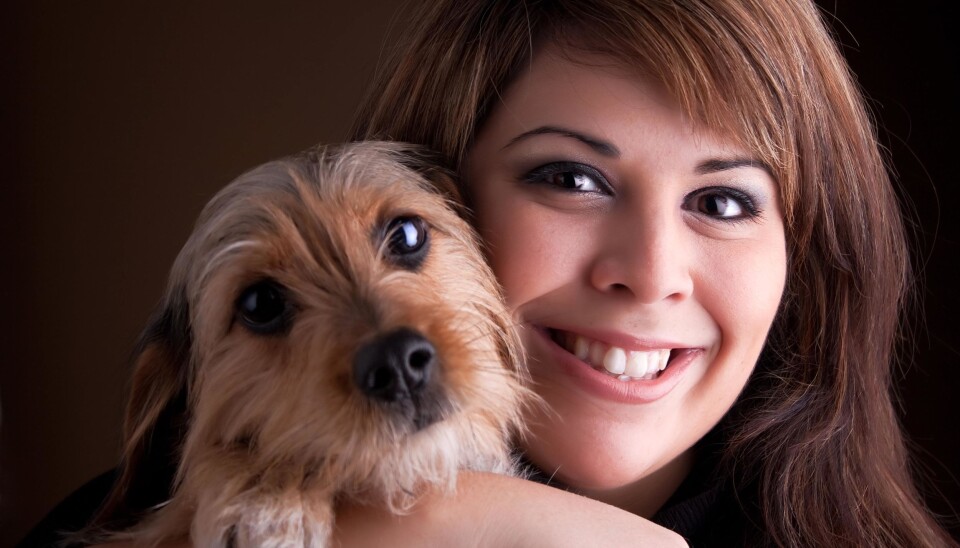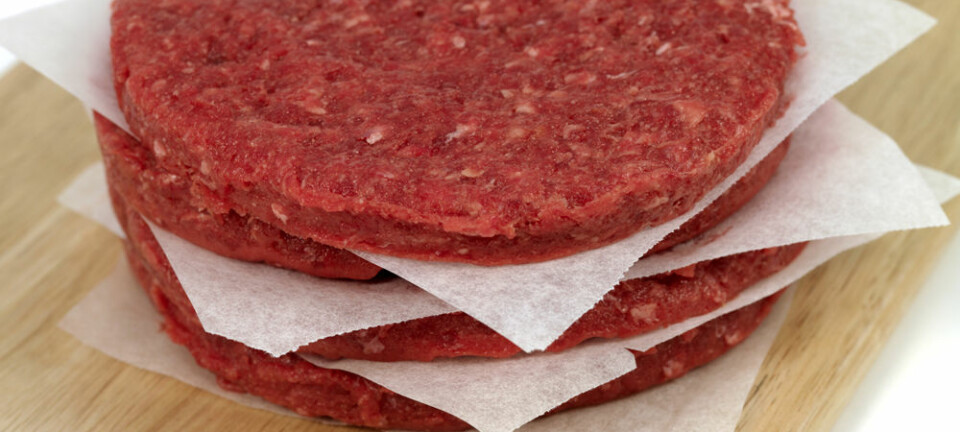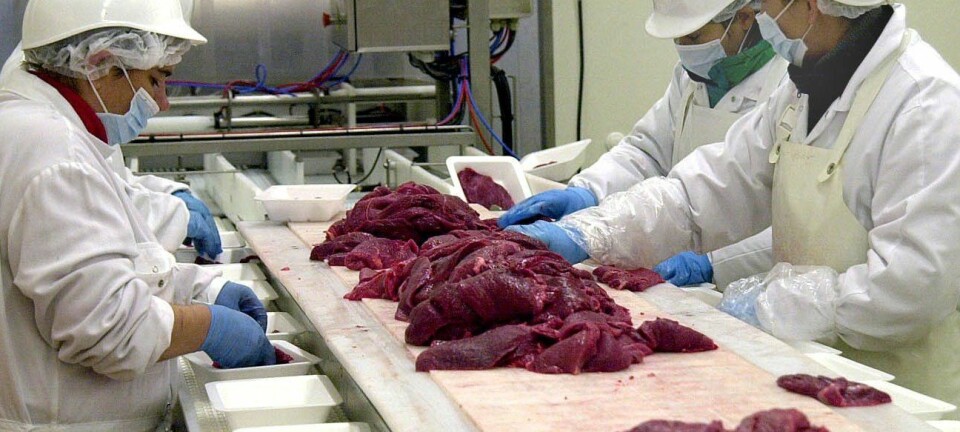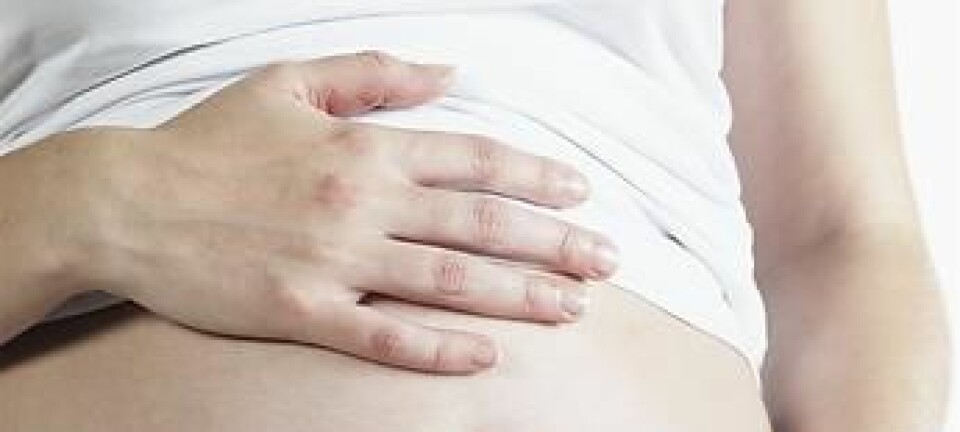
Pregnant women with pets have more vaginal E. coli
Intestinal bacteria from dogs and cats appear to colonise pregnant women’s vagina, which can increase the risk of e.g. urinary tract infections. This may be caused by the bacteria travelling from the animal via the woman’s hands to her vagina.
Pregnant women who live with a dog or a cat are twice as likely as other women to have intestinal bacteria in their vagina.
In a new study, E. coli bacteria were found in the vagina of one in six of the participating women.
Many developed cystitis
”We were surprised to see such a strong correlation. You’re more vulnerable when you’re pregnant, so this is not the best time to have E. coli bacteria in your vagina,” says Jakob Stokholm, MD, PhD, a researcher at COPSAC, the Copenhagen Studies on Asthma in Childhood.
He is the lead author of a new study, published in the journal Plos One.
We were surprised to see such a strong correlation. You’re more vulnerable when you’re pregnant, so this is not the best time to have E. coli bacteria in your vagina.
The study indicates that intestinal bacteria can spread to areas such as the urethra and may cause urinary tract infections (UTI), also known as acute cystitis or bladder infection.
The study also revealed that the pet-owning pregnant women were given more antibiotics than other pregnant women. Around half of the antibiotics were used to fight UTIs.
The cause still eludes us
Since this is an observational study, the researchers cannot establish a causal connection with any certainty; however, transmission of bacteria between pet and owner appears to be a likely cause.
There may also be a third factor involved, which the researchers have not taken into account:
We suspect that it may have something to do with the women getting bacteria from their dog or cat on their hands, and then these bacteria may be transmitted to the mouth or the vagina.
“This is the only study of its kind in this area, so it should be interpreted with caution. But it clearly shows a need for further research into the underlying mechanisms,” says Stokholm.
A pointer for future research
Although previous studies have shown that pets and their owners share bacteria, it is not possible in this case to say whether the bacteria actually came from the pet.
Humans and animals in the same household can carry the same bacterial strain in their intestines. Therefore, says the researcher, further research is needed to determine the type of intestinal bacteria that are involved and how they spread.
“We suspect that it may have something to do with the women getting bacteria from their dog or cat on their hands, and then these bacteria may be transmitted to the mouth or the vagina,” he says.
“Dogs lick their own behinds and their fur, which means they carry lots of E coli bacteria.”
If the bladder inflammation spreads to e.g. the kidneys, it can become serious, and it may also increase the risk of giving birth prematurely.
However, antibiotic treatment during pregnancy has been linked to an increased risk of the child developing asthma later in life.
It was for this reason that the researchers behind the new study decided to look into the matter, since they specialise in the causes of asthma and allergies.
“It appears that there may also be some long-term effects of the treatment which haven’t previously been accounted for.”
Intestinal bacteria affect immune system
Other studies have also shown that the mother’s bacteria during pregnancy and birth may cause severe infections in the new-born baby:
“The baby’s immune system is immature when it’s inside the mother’s womb and in its early life,” says Stokholm.
“The baby may therefore be affected by the surrounding environment. This may be an indication that pregnant women should pay extra attention to their hand hygiene.”
-------------------------
Read the Danish version of this article at videnskab.dk
Translated by: Dann Vinther
Scientific links
- Stokholm J, Schjørring S, Pedersen L, Bischoff AL, Følsgaard N, et al. (2012) Living with Cat and Dog Increases Vaginal Colonization with E. coli in Pregnant Women. PLoS ONE 7(9): e46226. doi:10.1371/journal.pone.0046226
- Johnson JR, Owens K, Gajewski A, Clabots C. Escherichia coli colonization patterns among human household members and pets, with attention to acute urinary tract infection. J. Infect. Dis. 2008 Jan 15;197(2):218–24
- Stensballe LG, Simonsen J, Jensen SM, Bønnelykke K, Bisgaard H. Use of Antibiotics during Pregnancy Increases the Risk of Asthma in Early Childhood. J. Pediatr. [Internet]. 2012 [cited 2012 Nov 15];
- Stoll BJ, Hansen NI, Sánchez PJ, Faix RG, Poindexter BB, Meurs V, et al. Early Onset Neonatal Sepsis: The Burden of Group B Streptococcal and E. Coli Disease Continues. Pediatrics. 2011 May 1;127(5):817–26.
- Weston EJ, Pondo T, Lewis MM, Martell-Cleary P, Morin C, Jewell B, et al. The Burden of Invasive Early-onset Neonatal Sepsis in the United States, 2005–2008. Pediatr. Infect. Dis. J. 2011 Nov;30(11):937–41.
- Dunn RR, Fierer N, Henley JB, Leff JW, Menninger HL (2013) Home Life: Factors Structuring the Bacterial Diversity Found within and between Homes. PLoS ONE 8(5): e64133. doi:10.1371/journal.pone.0064133








